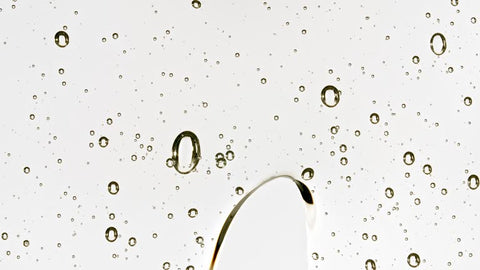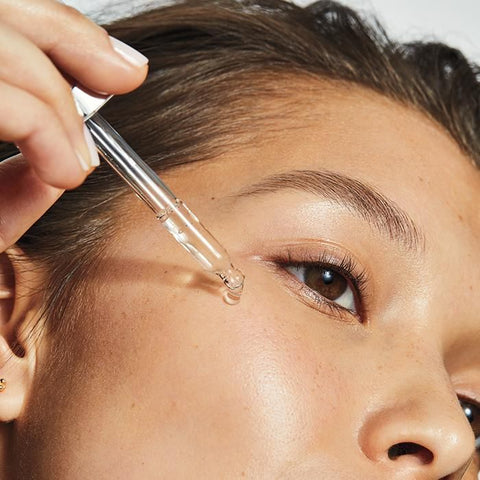Retinol and Sensitive Skin: 8 Expert Tips to Avoid Irritation
Retinol is a powerful ingredient that helps smooth fine lines, fight acne, and boost collagen production. However, it can also cause irritation, particularly for those with sensitive skin. The good news is that you don’t have to give up on retinol to enjoy its benefits. By following a few key strategies, you can minimize irritation while still reaping the rewards of this anti-aging powerhouse.
In this guide, we’ll share 8 expert tips for using retinol on sensitive skin to help you achieve smoother, clearer skin without the discomfort.
Key Takeaways:
- Start Slowly: Gradually increase your retinol use to help your skin build tolerance.
- Use a Buffer: Apply a hydrating moisturizer before or after retinol to reduce irritation.
- Choose Sensitive-Skin Formulas: Opt for retinol serums with soothing ingredients.
- Hydrate Regularly: Follow retinol with nourishing products to prevent dryness and peeling.
- Always Use Sunscreen: Protect your skin from increased sun sensitivity when using retinol.
Why Does Retinol Cause Irritation?
Retinol works by speeding up skin cell turnover, which brings fresh, youthful skin to the surface. However, this increased turnover can also lead to dryness, redness, and peeling as the skin becomes more sensitive. These side effects are especially noticeable for those with sensitive skin types.
Common signs of irritation include:
- Redness
- Flakiness or peeling
- Dryness and tightness
- Increased sun sensitivity
But don’t worry—there are several strategies to reduce irritation while still benefiting from retinol’s anti-aging properties.
1. Start Slow
If you have sensitive skin, it’s important to give your skin time to adjust to retinol. Start by using it once or twice a week, and gradually increase the frequency as your skin builds tolerance. This allows your skin to adapt without overwhelming it.
Why this works: Starting slow reduces the risk of irritation and allows your skin to adjust gradually, minimizing potential side effects.
2. Use a Buffer Method
The “buffer method” involves applying a layer of moisturizer before or after your retinol to create a barrier that dilutes its intensity. This makes the retinol less likely to cause irritation.
How to do it:
- Apply a thin layer of a gentle, hydrating moisturizer on damp skin.
- After a few minutes, apply your retinol serum over the moisturizer.
Alternatively, you can apply retinol first and then lock in hydration with a moisturizer. This method helps slow down the absorption of retinol and makes it more tolerable for sensitive skin.
3. Choose a Retinol Product for Sensitive Skin
When shopping for retinol, look for products specifically formulated for sensitive skin. These often include soothing ingredients like:
- Hyaluronic acid: Helps to hydrate and plump the skin.
- Aloe Vera: Soothes and reduces inflammation.
- Botanical extracts: Calm redness and irritation.
These added ingredients can reduce the dryness and discomfort associated with retinol, making it a more manageable experience.
4. Apply Retinol to Dry Skin
Applying retinol on damp skin can increase its absorption, which may lead to irritation. Always ensure your skin is completely dry before applying retinol. Wait a few minutes after washing your face to ensure your skin is completely dry.
Why this works: Dry skin allows retinol to be absorbed more slowly, reducing the risk of irritation.
5. Hydrate and Moisturize Regularly
To combat the drying effects of retinol, it’s crucial to keep your skin hydrated. After applying retinol, follow up with a hydrating moisturizer or serum containing ingredients like:
- Hyaluronic acid: Attracts moisture to the skin.
- Ceramides: Restore the skin’s natural barrier.
- Glycerin: Prevents moisture loss.
Regular hydration helps to prevent the peeling, flaking, and discomfort that often accompanies retinol use.
6. Limit Use of Other Active Ingredients
When incorporating retinol into your routine, it’s best to avoid using other potent active ingredients like AHAs, BHAs, or vitamin C at the same time. These can over-exfoliate the skin, increasing the chances of irritation.
Why this works: By minimizing the use of other actives, you reduce the likelihood of overwhelming your skin.
7. Always Use Sunscreen During the Day
Retinol makes your skin more sensitive to the sun, so it’s essential to apply a broad-spectrum sunscreen with SPF 30 or higher every morning. Physical sunscreens containing zinc oxide or titanium dioxide are typically gentler on sensitive skin.
Why this works: Sunscreen protects your skin from harmful UV rays, preventing further irritation and sun damage.
8. Know When to Take a Break
If you experience excessive irritation, redness, or peeling, don’t be afraid to take a break from retinol. Reducing your usage or pausing for a few days can give your skin time to recover.
Why this works: Giving your skin a break allows it to heal and reset, ensuring you can continue using retinol without causing long-term damage.
Final Thoughts: Retinol for Sensitive Skin Is Possible
Although retinol can be intimidating for sensitive skin, it’s still one of the most effective ingredients for anti-aging and skin clarity. With the right approach—starting slow, buffering with moisturizer, and focusing on hydration—you can enjoy the benefits of retinol without the irritation.
At Pal’s Skin Lab, we offer a gentle retinol serum designed for sensitive skin, so you can experience all the benefits of retinol with less irritation. Ready to incorporate retinol into your routine? Shop our sensitive-skin-friendly retinol serum today and begin your journey to smoother, more youthful skin!





Comments (0)
There are no comments for this article. Be the first one to leave a message!